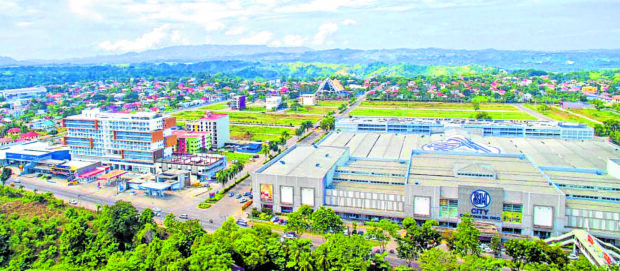The Philippines posted record-high investment pledges in H1 2023, a positive development for the industrial sector as these proposed projects are likely to take up industrial space and warehouses in the next 12 to 24 months.
Industrial parks in central and southern Luzon continue to entice investors while the expansion of developers’ industrial footprint should further boost the Philippines’ competitiveness as a manufacturing hub in Asia.
Colliers is cognizant of the government’s efforts to entice more investors. In our view, there should be a strong public-private partnership in attracting more foreign investments. Developers should assess the requirements of potential industrial locators and remain aggressive in offering concession to raise industrial space absorption within their facilities. Industrial parks should also feature townships.
Maximize investments
Colliers believes that developers and operators of industrial parks and warehouses can maximize the government’s manufacturing push by actively targeting investments from the country’s traditional and non-traditional partners. Aside from China, the Philippine government is actively attracting investments from Australia, New Zealand, Netherlands, and Germany.
In our view, more companies will likely look into Southeast Asia as a new hub for manufacturing expansions driven by the diversification of supply chain and availability of alternative resources outside of China.
The country should also attract more investments from trade deals including the recently-ratified Regional Comprehensive Economic Partnership (RCEP). These potential investments range from electric vehicles to food manufacturing, which are ideal locators in industrial parks.
Flexibility in locators’ requests
Colliers believes that industrial park developers need to become more flexible to locators’ requests for concession especially given the significant completion of new industrial space and warehouses.
In our view, landlords should be more proactive in accommodating locators’ requests such as implementation of extended fit-out periods and relaxed escalation terms. Overall, Colliers believes that industrial developers should be more open to lease rate negotiations especially among tenants who are still on a wait-and-see stance.
A proactive stance in providing concessions will also enable industrial parks to corner more investments from the Philippines’ traditional and non-traditional sources of foreign investments.
Integrate township components into industrial parks
Colliers recommends that developers assess the viability of incorporating industrial parks inside township developments.
In our view, industrial parks and warehouses are alternative options to traditional offices in live-work-play communities. For instance, AboitizLand’s LIMA Estate is composed of an industrial park, technology center, a residential subdivision, as well as hotels, dormitories and commercial areas. Other industrial parks located inside integrated communities include Pueblo de Oro’s Light Industry and Science Park IV in The Townscapes Malvar in Batangas and Filinvest Land’s Filinvest Innovation Park in Ciudad de Calamba in Laguna.
Southern and Central Luzon corner new locators
In H1 2023, industrial vacancy in the Cavite-Laguna-Batangas (Calaba) industrial corridor dropped to 5.5 percent from 5.7 percent in H2 2022. Industrial take-up during the period was supported by logistics firms, as well as food, electronics and equipment manufacturing firms. An FMCG retailer also took up industrial space in Cavite Technopark.
In Q1 2023, approved foreign investments in the Calabarzon Region reached P47.5 billion, accounting for 28 percent of total approved investments during the period. According to Philippine Chamber of Commerce and Industry (PCCI), the region is seen to receive more investments because of its “robust industrial and manufacturing sector for automotive, electronics, textiles and food processing”.
Some of the recent locators which announced expansion in Calaba include Procter & Gamble (P&G) which will expand its current site in Light Industry and Science Park 1 (LISP 1) with a new diaper manufacturing facility, as well as Dyson which will build a research and development (R&D) facility within First Philippine Industrial Park (FPIP). Meanwhile, D&L Industries opened its new factory in First Industrial Township in Batangas which will manufacture food ingredients, plastics and chemicals.
Colliers is also seeing sustained interest from electric vehicle (EV) firms. Ayala Group recently partnered with US-based Zero Motorcycles for the production of EVs within Laguna Technopark.
Meanwhile, we see Central Luzon rising as a viable alternative industrial location. Among the firms that recently announced expansion in the region include Shera Building Solutions in Teco Industrial Park in Pampanga, Envirotech in Clark Freeport Zone, and StBattalion in New Clark City.
In our view, the modernization of the Clark International Airport and the completion of the proposed Subic-Clark Cargo Railway will further support the expansion of industrial activities in Central Luzon.
Flattish growth in lease rates
Land leasehold and warehouse rents held firm despite the non-renewal of some existing locators, as well as the significant completion of industrial supply. In H1 2023, we saw the completion of nearly 60 ha of new industrial space in Calaba.
We forecast land leasehold and warehouse lease rates to increase by 1.5 percent and 5.8 percent, respectively in 2023, fueled by robust demand from manufacturing, FMCG, and e-commerce firms, and as more pledged investments materialize and take up space.
In our view, the continued expansion of manufacturing activities will likely be crucial in sustaining the take-up of warehouse spaces and partly lift industrial lease rates. Data from IHS Markit showed that as of June 2023, the country’s headline index continues to register above the 50-neutral mark, which signifies an expansion in manufacturing activities.
